There could be various reasons for high disk usage on a Windows computer, ranging from startup programs, background running apps, outdated device drivers to malware and corrupted software and system files.
In a typical case, the disk usage on the computer constantly remains high and goes up to a range of 80% to 100%, as soon as you start using the web browser or start working on a spreadsheet or document.
You can check and confirm the amount of disk usage on your computer by opening Task Manager and taking a look at the Disk column under the processes tab.

As you can see in the image above, the Disk column is marked red with High Disk Usage (99%), which means the resource usage on the computer is maxed out.
High Disk Usage (80 to 100%) in Windows 11/10
If your computer has become painfully slow, freezes, stutters, or hangs up frequently, it is likely suffering from high disk usage. You should be able to fix this issue using the following steps.
1. Restart the Computer
The first step would be to restart the computer, in order to rule out the possibility of a stuck program or process being the cause of this high disk usage on the computer.
If your computer is suffering from high disk usage due to other reasons, you will find it slowing down and struggling to run after a certain period of use, once it has been restarted.
2. Repair System Files Using SFC
The next step would be to rule out the possibility of the problem being caused due to corrupted system files.
1. Type CMD in the Search bar > right-click on Command Prompt in the search results and select Run as Administrator option.
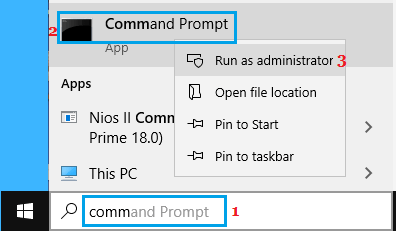
2. Type sfc /scannow in the Command Prompt window and press the Enter Key on the keyboard of your computer.
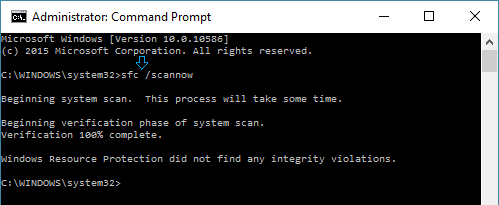
Patiently wait for Windows to scan your computer for System File Errors and fix them.
3. Disable Startup Apps
Apps like OneDrive and Skype can end up causing High Disk Usage due to their default tendency to automatically start up with the computer and continue running in the background.
1. Open Settings > click on Apps in the left-pane and then click on Startup in the right-pane.
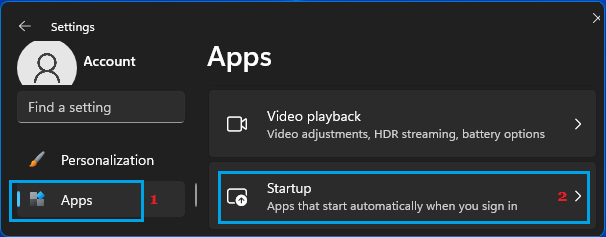
2. On the Startup screen, move the toggle next to Apps that you do not want startup with the computer to OFF position.
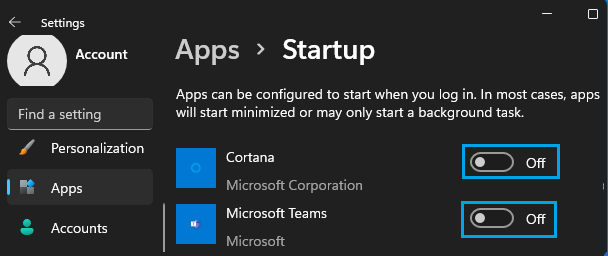
When you restart the computer, the disabled won’t be able to startup with the computer.
4. Disable Background Running Apps
Even if Skype and OneDrive are disabled from startup, they have tendency to keep running in background, once they are manually opened by the user.
1. Go to Settings > Apps > click on Installed Apps in the right-pane.
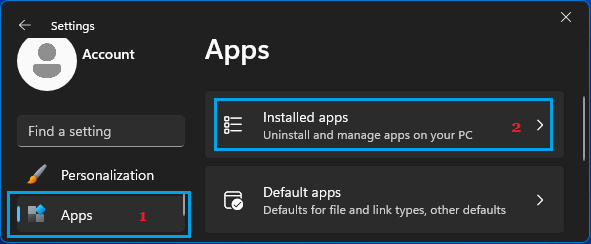
2. On the next screen, click on 3-dots icon located next to the background running app and select Advanced options.
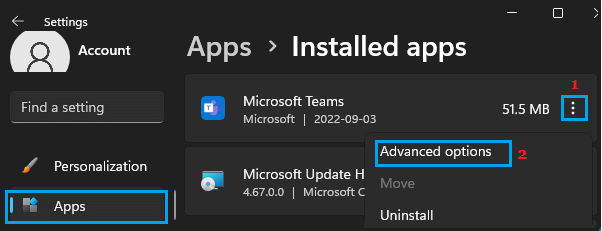
3. Scroll down to “Background App Permissions section” and set Let this App Run in Background to Never.
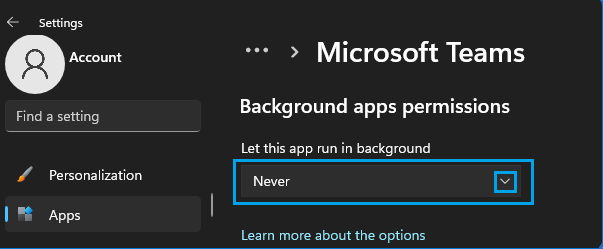
Repeat the above steps for OneDrive and other background running apps.
5. Disable SuperFetch
While the SuperFetch feature can help in efficiently loading apps on the computer, it has also been associated with high disk usage.
1. Press Windows + R keys to open Run Command.
2. Type services.msc in the Run Command window and then click on OK.
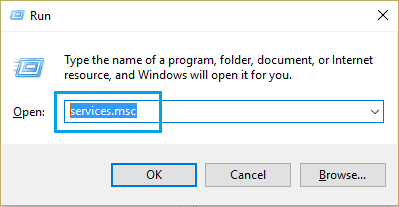
3. On the next screen, double-click on SysMain entry.
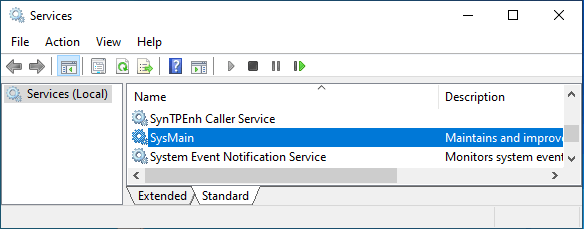
4. On SysMin Properties screen, set the Startup type to Disabled and then click on the Stop button.
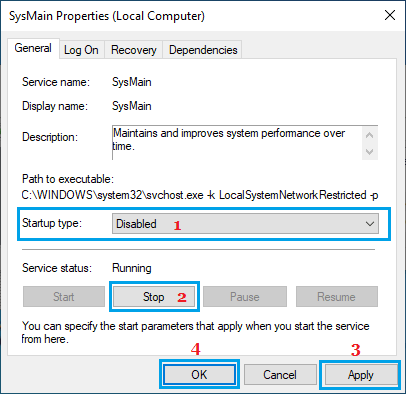
5. Click on Apply and OK to save this setting on your computer.
6. Disable MSI Mode in StorAHCI.sys Driver
If you are facing High Disk usage on a computer with SSD drive, the problem could be due to a firmware bug that prevents SSD drives from completing input/output requests.
1. Right-click on Start button and click on Device Manager.
2. On Device Manager screen, expand IDE ATA/ATAPI controllers > right-click on Standard SATA AHCI Controller and click on Properties.
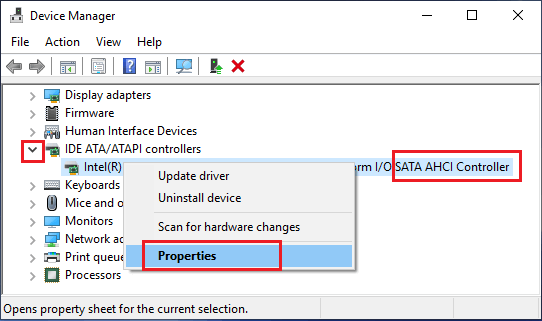
3. On the next screen, switch to the Driver tab and click on Driver Details.
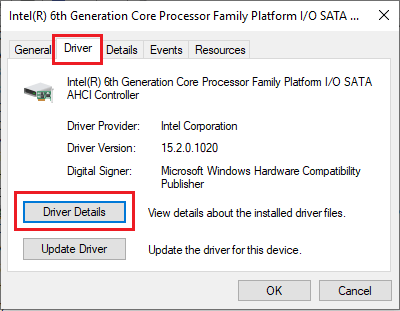
If you see storachi.sys entry on the Driver Details screen, you need to disable MS Mode for the Driver by using Registry Editor fix mentioned on Microsoft’s support page.
7. Disable Tips & Tricks
Getting Tips and Tricks from Microsoft can sometimes lead to high resource usage.
1. Go to Settings > System > Notifications > scroll down and click on Additional Settings.
2. On the next screen, uncheck the Get tips and suggestions when using Windows option.
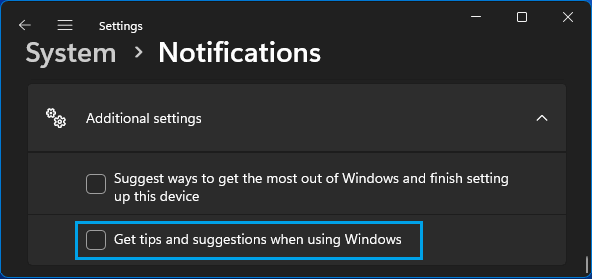
Also, uncheck “Suggest ways to get the most out of Windows…” option.
8. Switch OFF Diagnostic Data
Sending out diagnostic data can be a contributing factor for high resource usage on a Windows computer.
1. Go to Settings > Privacy & security > click on Diagnostics & feedback tab.
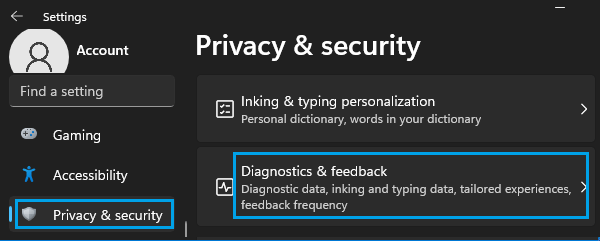
2. On the next screen, disable Diagnostic data, Improve inking & typing and Tailored experiences.
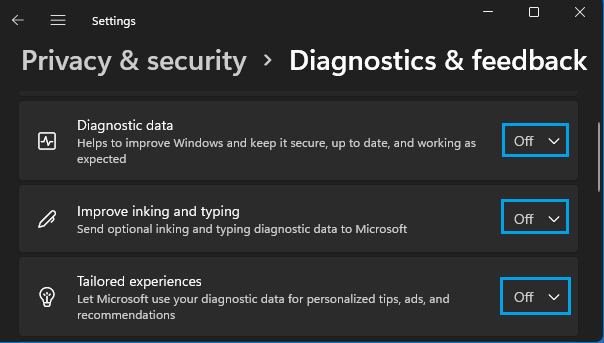
9. Disable Downloads from other Computers
Allowing the computer to download updates from other PCs can lead to high resource usage on a Windows computer due to Runtime Broker Activity.
1. Go to Settings > Windows Update (left-pane) > click on Advanced options in the right-pane.
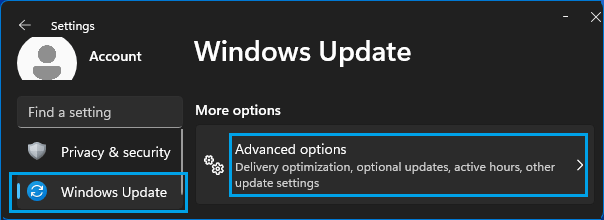
2. From the next screen, go to Delivery Optimization > disable Allow Downloads from other PCs option.
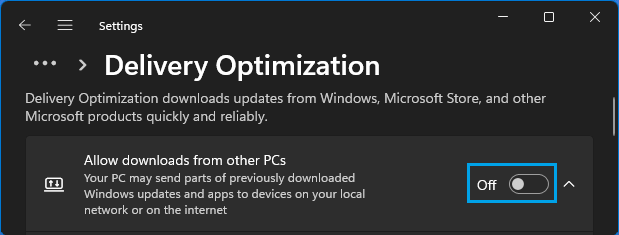
10. Setup Visual Effects for Best Performance
Windows provides the option to reduce resource usage by selecting the option to set visual effects for best performance, instead of being set for best appearance.
1. Open Run Command > type SystemPropertiesAdvanced and click on OK.
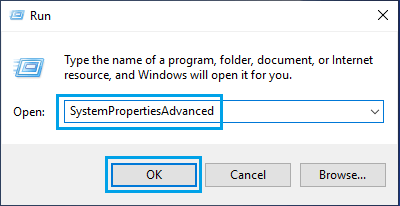
2. On the next screen, switch to Advanced tab and click on the Settings button, located under “Performance” section.
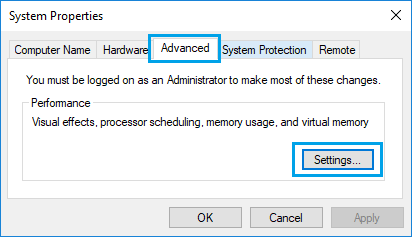
3. On Performance options screen, switch to Visual Effects tab and select Adjust for best performance option.
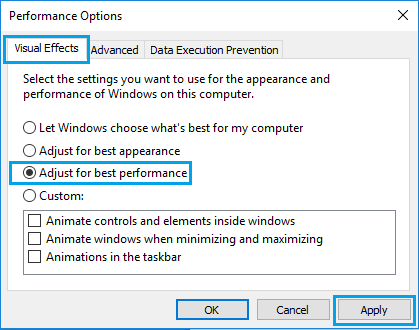
5. Click on Apply > OK to save this settings on your computer.
11. Check for Viruses and Malware
The presence of viruses and malware on the computer can cause a variety of problems, including 100% disk usage error.
To check for viruses and malwares, make sure that your antivirus program is up to date. You can also make use of Microsoft’s free Safety Scanner, which you can make use of to scan your computer for malware and viruses.
12. Check Hard Drive for Errors
1. Type PowerShell in the Search bar > right-click on Windows PowerShell and click on Run as administrator option.

2. On the PowerShell screen, type chkdsk.exe /f /r and press the Enter key.
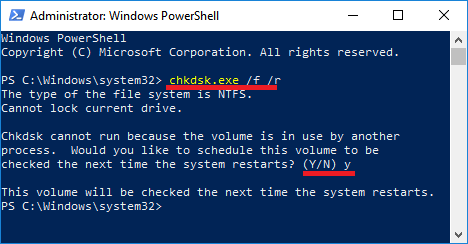
If you are prompted to schedule volume to be checked on next restart, type Y
3. Close the PowerShell Window > Restart the computer and patiently wait for Windows to scan the Hard drive for errors and repair bad sectors (if any).
Note: This process can take a very long time (5 to 12 hours or more).